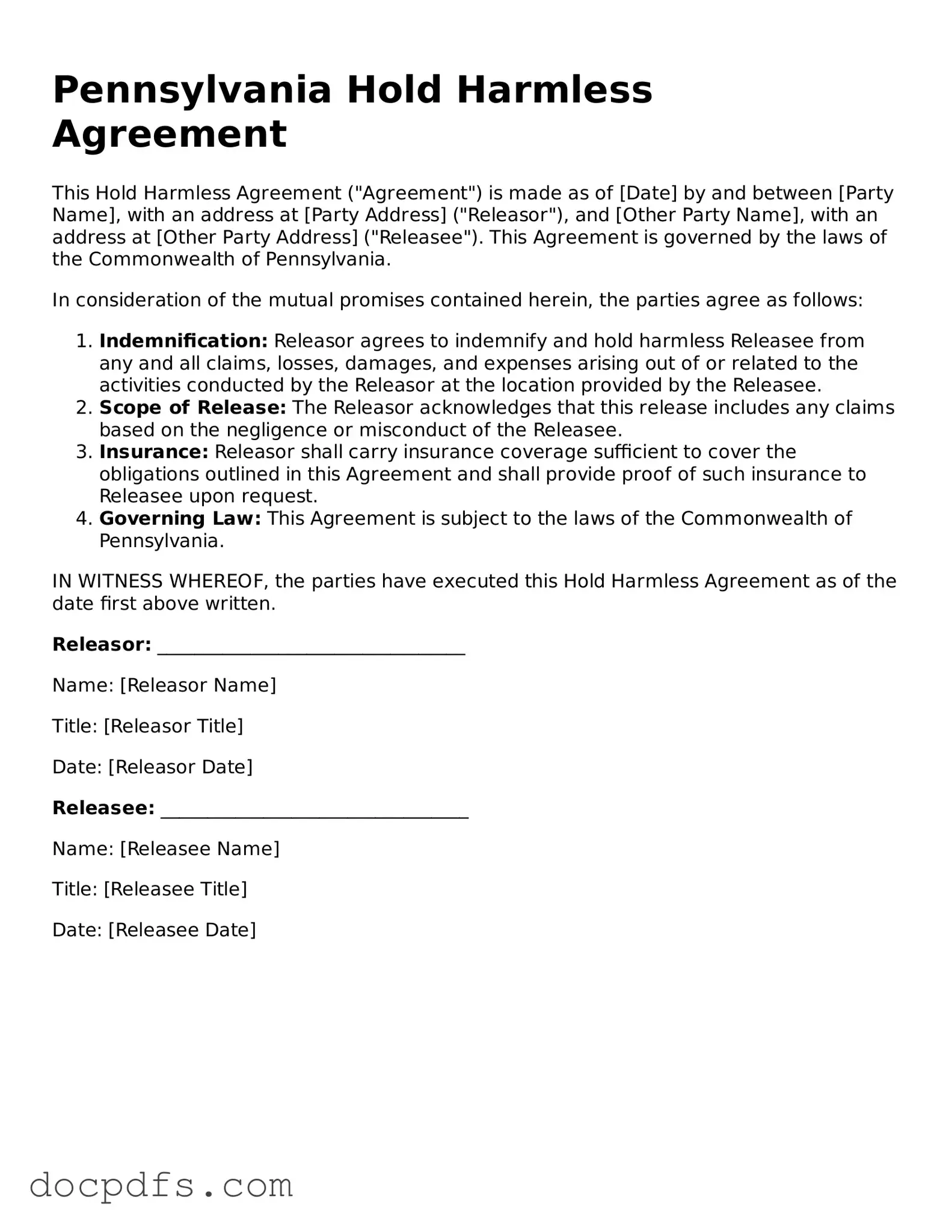What is a Pennsylvania Hold Harmless Agreement?
A Hold Harmless Agreement is a legal document that protects one party from liability or claims that may arise from the actions of another party. In Pennsylvania, this type of agreement is commonly used in various contexts, such as rental agreements, construction contracts, and event planning. It ensures that if one party faces a lawsuit or damages due to the actions of the other, the responsible party agrees to cover those costs.
Who typically uses a Hold Harmless Agreement in Pennsylvania?
Various individuals and organizations utilize Hold Harmless Agreements. Common users include:
-
Property owners renting out their space
-
Contractors working on construction projects
-
Event organizers hosting gatherings
-
Businesses offering services that could involve risk
Each of these groups seeks to minimize their liability in case of unforeseen incidents.
What are the key components of a Hold Harmless Agreement?
A typical Hold Harmless Agreement includes several essential elements:
-
Identification of Parties:
Clearly states the names and roles of the parties involved.
-
Scope of Liability:
Defines the specific activities or situations covered by the agreement.
-
Indemnification Clause:
Outlines the responsibilities of the parties regarding claims and damages.
-
Governing Law:
Specifies that Pennsylvania law governs the agreement.
Including these components helps ensure clarity and enforceability.
Is a Hold Harmless Agreement enforceable in Pennsylvania?
Yes, Hold Harmless Agreements are generally enforceable in Pennsylvania, provided they meet certain legal requirements. The agreement must be clear, specific, and mutually agreed upon by both parties. However, courts may scrutinize these agreements, especially if they attempt to waive liability for gross negligence or willful misconduct.
Can a Hold Harmless Agreement be modified after it is signed?
Yes, a Hold Harmless Agreement can be modified or amended after it has been signed. Both parties must agree to the changes, and it is advisable to document any modifications in writing. This helps maintain clarity and ensures that all parties are aware of the updated terms.
What should I consider before signing a Hold Harmless Agreement?
Before signing a Hold Harmless Agreement, consider the following:
-
Understand the scope of the agreement and what liabilities you may be accepting.
-
Evaluate the risks associated with the activity or event.
-
Consult with a legal professional if you have any questions or concerns.
-
Ensure that the agreement is fair and does not overly burden one party.
Taking these steps can help protect your interests.
Are there any exceptions to the Hold Harmless Agreement in Pennsylvania?
Yes, certain exceptions exist. Hold Harmless Agreements may not protect against liability arising from:
-
Intentional misconduct
-
Gross negligence
-
Violations of public policy
Courts may refuse to enforce agreements that attempt to absolve a party from responsibility in these situations.
How can I create a Hold Harmless Agreement?
Creating a Hold Harmless Agreement can be straightforward. Follow these steps:
-
Identify the parties involved and their roles.
-
Clearly outline the scope of the agreement.
-
Include an indemnification clause.
-
Specify the governing law.
-
Have both parties sign and date the agreement.
While templates are available online, it is wise to seek legal advice to ensure that the agreement meets all necessary legal standards.
